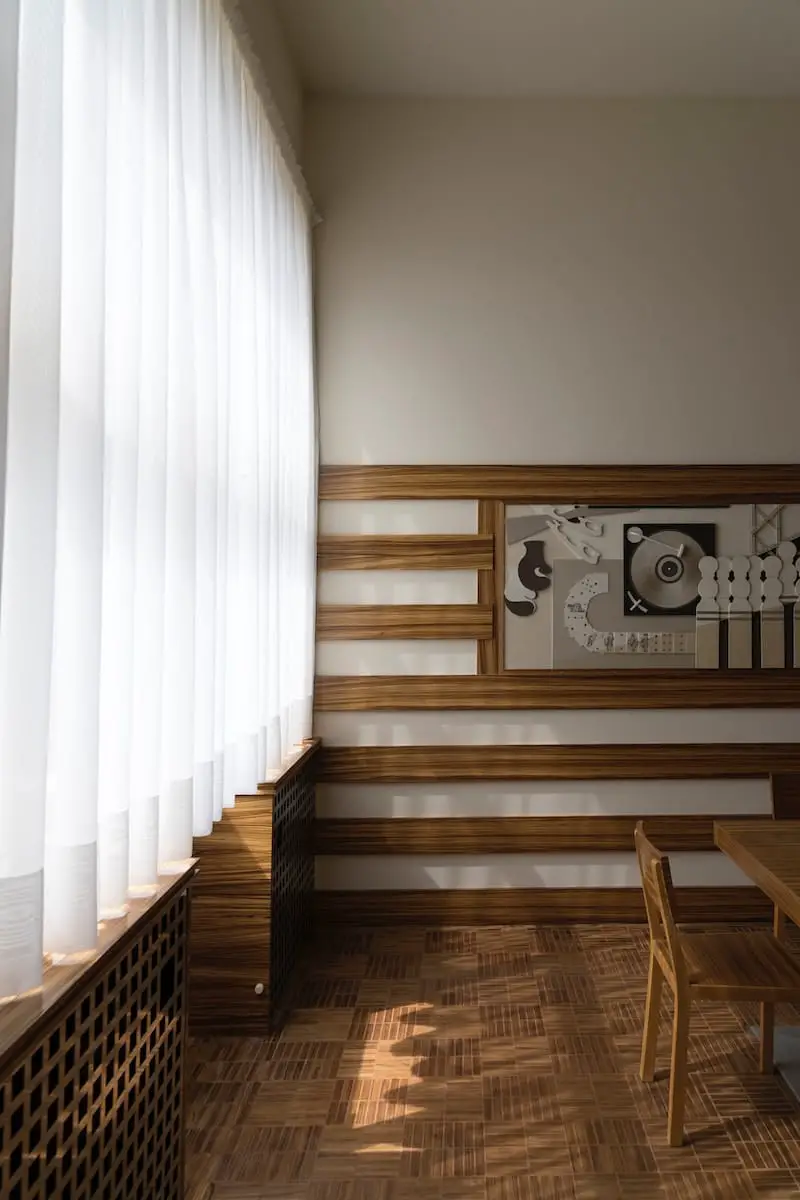
If you’re shopping for window treatments, you might be confused by the terms curtains and drapes. Are they the same thing? Or are they different? And if so, how do you tell them apart?
The answer is: yes, there is a difference between curtains and drapes, although they are often used interchangeably. The main difference is that curtains are made of lighter weight fabric and have a more casual style, while drapes are made of heavier fabrics and have a more formal appearance.
Curtains are fabric panels that are often sold in pairs and hung from a rod that is mounted on the wall or ceiling. They are used to cover windows for privacy, light control, or decoration. Curtains come in a wide range of widths, lengths, colors, and patterns, and they can suit any type of room or decor.
Curtains are usually made of lightweight fabrics like sheer, cotton, or linen. They can filter or block light depending on the fabric thickness and color. Some curtains may have a lining to add more insulation or light blocking.
Curtains can have different types of headings or tops that affect how they hang and look. Some common types of headings are:
Curtains can also vary in length depending on the window size and style preference. Some common lengths are:
Drapes are also fabric panels that are often sold in pairs and hung from a rod that is mounted on the window frame. They are used to cover windows for privacy, light control, or decoration. Drapes are similar to curtains but have some distinctive features that make them different.
Drapes are usually made of heavier fabrics like velvet, damask, or silk. They also have a lining that adds more weight, insulation, and light blocking. Drapes are designed to block all outside light and create a dark and cozy atmosphere in the room.
Drapes typically have pleated headings that give them a formal and sophisticated look. Some common types of pleats are:
Drapes are usually designed to reach the floor or longer. They can create puddles on the floor to add more drama and style to the room.
The choice between curtains and drapes depends on your personal preference, budget, and room decor. Here are some factors to consider when choosing between them:
Q: Can I use curtains and drapes together?
A: Yes, you can use curtains and drapes together to create a layered look that adds more depth and dimension to your windows. You can use sheer curtains as the inner layer to filter light and add privacy, and use drapes as the outer layer to block light and add style. You can also mix and match different colors, patterns, and textures to create contrast and interest.
Q: How do I measure for curtains and drapes?
A: To measure for curtains and drapes, you need to measure the width and length of your window and the rod. For the width, measure the rod from end to end and add 6 to 12 inches for overhang. For the length, measure from the rod to the desired point where you want your curtains or drapes to end. For curtains, you can choose from sill length, apron length, floor length, or puddle length. For drapes, you should choose floor length or longer.
Q: How do I hang curtains and drapes?
A: To hang curtains and drapes, you need a rod, brackets, hooks or rings, a level, a drill, and a screwdriver. First, mark the position of the brackets on the wall or window frame using a level. Make sure they are aligned and level. Second, drill holes on the marks and attach the brackets with screws. Third, attach hooks or rings to the top of your curtains or drapes according to the heading type. Fourth, slide the hooks or rings onto the rod. Fifth, place the rod onto the brackets and secure it with screws or finials.
Curtains and drapes are both popular window treatments that can enhance your room decor and provide privacy and light control. However, they have some differences in terms of fabric, style, length, and function. Curtains are more casual and versatile, while drapes are more formal and luxurious. Curtains can filter or block light depending on the fabric thickness and color, while drapes can block all outside light completely. Curtains are easier to maintain than drapes because they are lighter and can be machine washed or hand washed. Drapes are harder to maintain than drapes because they are heavier and need to be dry cleaned or professionally cleaned.

Dale is the colorful mind behind HuetifulHomes.com, where he shows you how to create a home that is as fun and fabulous as you are. He has a passion for color and a knack for DIY, with years of interior design experience he shares his tips and tricks on how to create a home that reflects your personality and style. He believes that color is the key to happiness, and he wants to help you make your home more Huetiful.